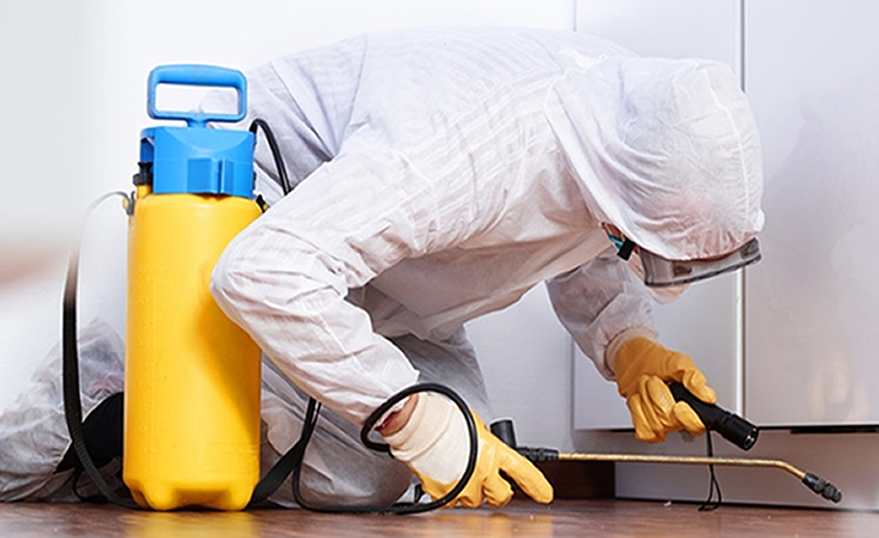Relied on Exterminator Near Me: Your Regional Pest Control Service!
Relied on Exterminator Near Me: Your Regional Pest Control Service!
Blog Article
Professional Pest Control Techniques for Long-Term Outcomes
In the realm of parasite control, achieving continual efficacy and long-lasting outcomes needs a thorough technique that transcends simple extermination. Professional pest control methods envelop a detailed strategy that starts with an extensive inspection and analysis, followed by specific parasite recognition to comprehend their actions patterns. The implementation of Integrated Parasite Monitoring (IPM) principles, coupled with eco-conscious treatments, creates the foundation of lasting pest eradication. The real test exists in the ongoing monitoring and maintenance of the treated locations, ensuring a pest-free atmosphere for the direct future. By diving right into the complexities of these strategies, a much deeper understanding of professional insect control techniques for enduring outcomes arises.
Assessment and Evaluation
Upon getting in a home for bug control solutions, the first step is a comprehensive evaluation and analysis to determine the level of the infestation and establish one of the most effective therapy strategy. Professional parasite control specialists are trained to thoroughly take a look at the facilities, trying to find indicators of parasite activity such as droppings, gnaw marks, nests, or any kind of structural damage. They will additionally analyze the problems that may be drawing in parasites, such as food resources, water leaks, or entry points.

Bug Identification and Behavior

Additionally, recognizing the behavior of the determined parasite is crucial to applying efficient control actions. Understanding where insects nest, what they feed on, and their activity patterns can help pest control professionals design methods to remove them efficiently. Some bugs might be nocturnal, while others are extra energetic throughout the day. This knowledge permits the application of treatments at ideal times for maximum effectiveness.
Integrated Insect Administration (IPM)
Integrated Parasite Management (IPM) strategies integrate numerous techniques to regulate and stop pest infestations in a lasting and eco friendly manner. exterminator. By incorporating methods such as biological control, environment manipulation, alteration of social practices, and the use of resistant selections, IPM aims to minimize the usage of chemical pesticides
One of the essential principles of IPM is the emphasis on avoidance. This aggressive approach entails tracking parasite populaces frequently to discover any kind of possible issues before they rise. By recognizing parasite troubles early on, pest control actions can be carried out promptly and successfully.
Furthermore, IPM advertises using non-toxic parasite control methods whenever feasible. This can consist of using natural killers of the pests, introducing valuable pests, or making use of scents to interfere with breeding patterns. By lowering reliance on chemical pesticides, IPM not only shields the setting yet also aids maintain a balance in the community.
Environmentally-Friendly Treatments
Implementing eco-conscious strategies in parasite control treatments can efficiently deal with invasions while prioritizing environmental sustainability. Environmentally-friendly therapies concentrate on minimizing the influence of insect control methods on ecosystems, non-target organisms, and human health and wellness. These techniques often include using natural killers, such as ladybugs or nematodes, to manage pest populations, reducing the need for chemical treatments. In addition, strategies like environment adjustment, such as readjusting dampness degrees or getting pest control rid of food resources, can help discourage bugs without using harmful compounds.
One more key element of environmentally-friendly treatments is using organic and eco-friendly products that break down swiftly without leaving damaging residues in the setting. Agricultural pesticides stemmed from plants like chrysanthemums or neem offer reliable parasite control while positioning very little threat to non-target species. Moreover, employing methods like warm therapies or pheromone catches can target certain insects with accuracy, minimizing the total ecological influence of insect control practices.
Ongoing Monitoring and Maintenance
Continuous monitoring and maintenance are essential components of efficient insect control administration. Recurring tracking plays a critical function in making sure that bug problems are found very early and taken care of quickly. Routine inspections by qualified experts are needed to determine any kind of indicators of parasite activity, assess the performance of previous therapies, and make changes to the insect control plan as needed. By checking insect populaces with time, parasite control specialists can track patterns, expect possible problems, and execute preventive steps to decrease the risk of future invasions.
Along with monitoring, maintenance practices are crucial for long-lasting bug control success. This consists of carrying out appropriate sanitation steps to eliminate prospective food and water resources for insects, sealing access factors to protect against pests from getting in the facilities, and resolving any type of architectural issues that might help with bug problems (Pest control Washington DC). By including ongoing tracking and upkeep right into an incorporated bug management method, organizations can ensure a pest-free setting and protect their building against costly damage and health dangers
Verdict
In verdict, utilizing expert pest control strategies such as detailed evaluation and evaluation, precise parasite identification and understanding of their actions, integrated bug administration strategies, environmentally-friendly treatments, and recurring tracking and upkeep are necessary for attaining long-term cause parasite control. By applying these techniques, people can successfully handle parasite infestations and maintain a pest-free environment in a lasting fashion.
Report this page